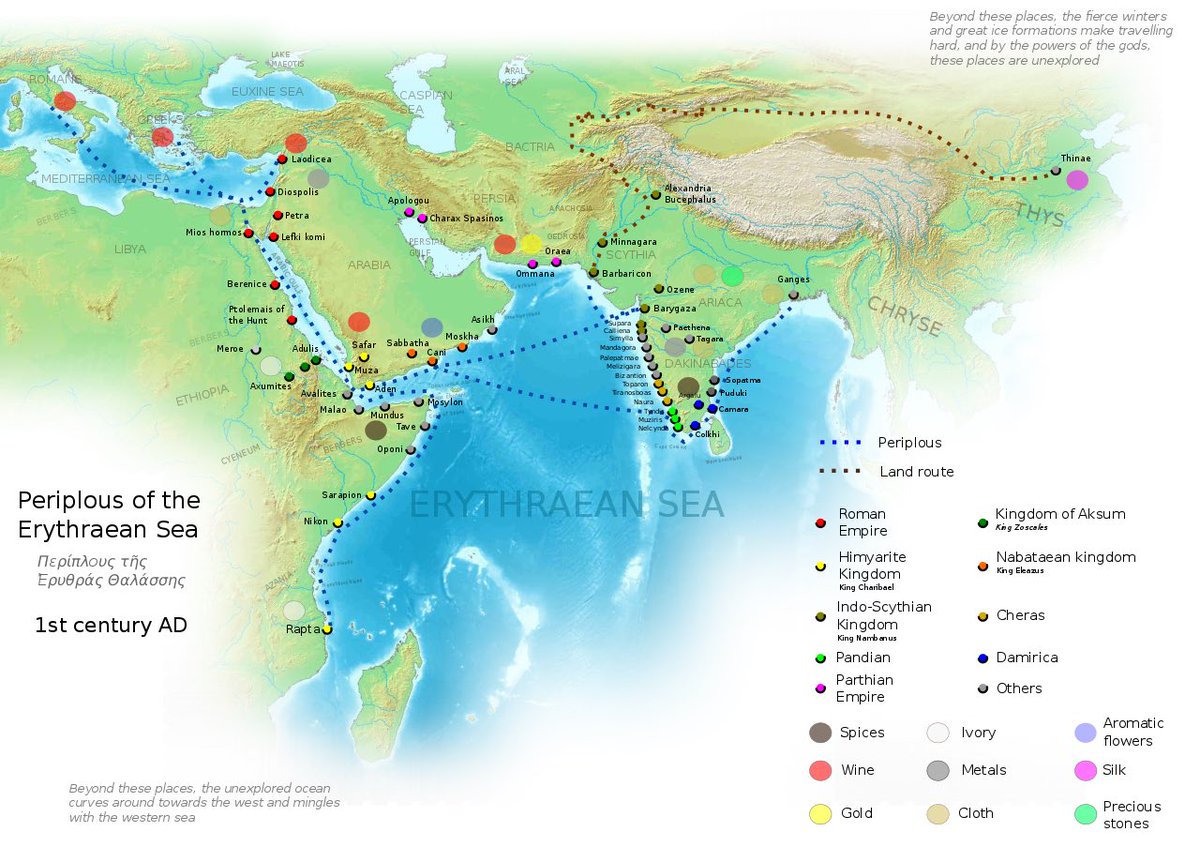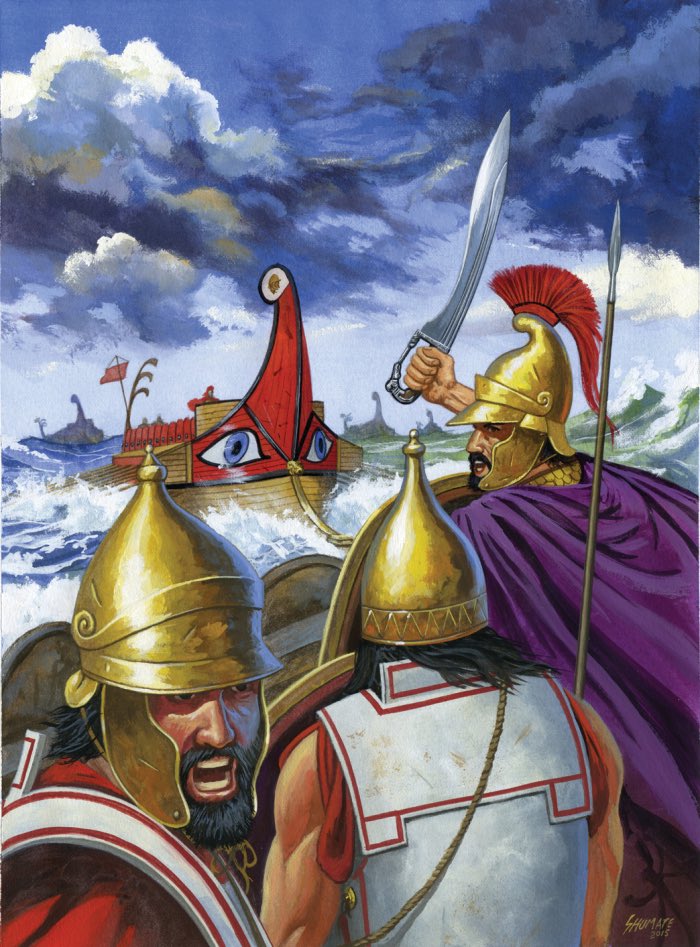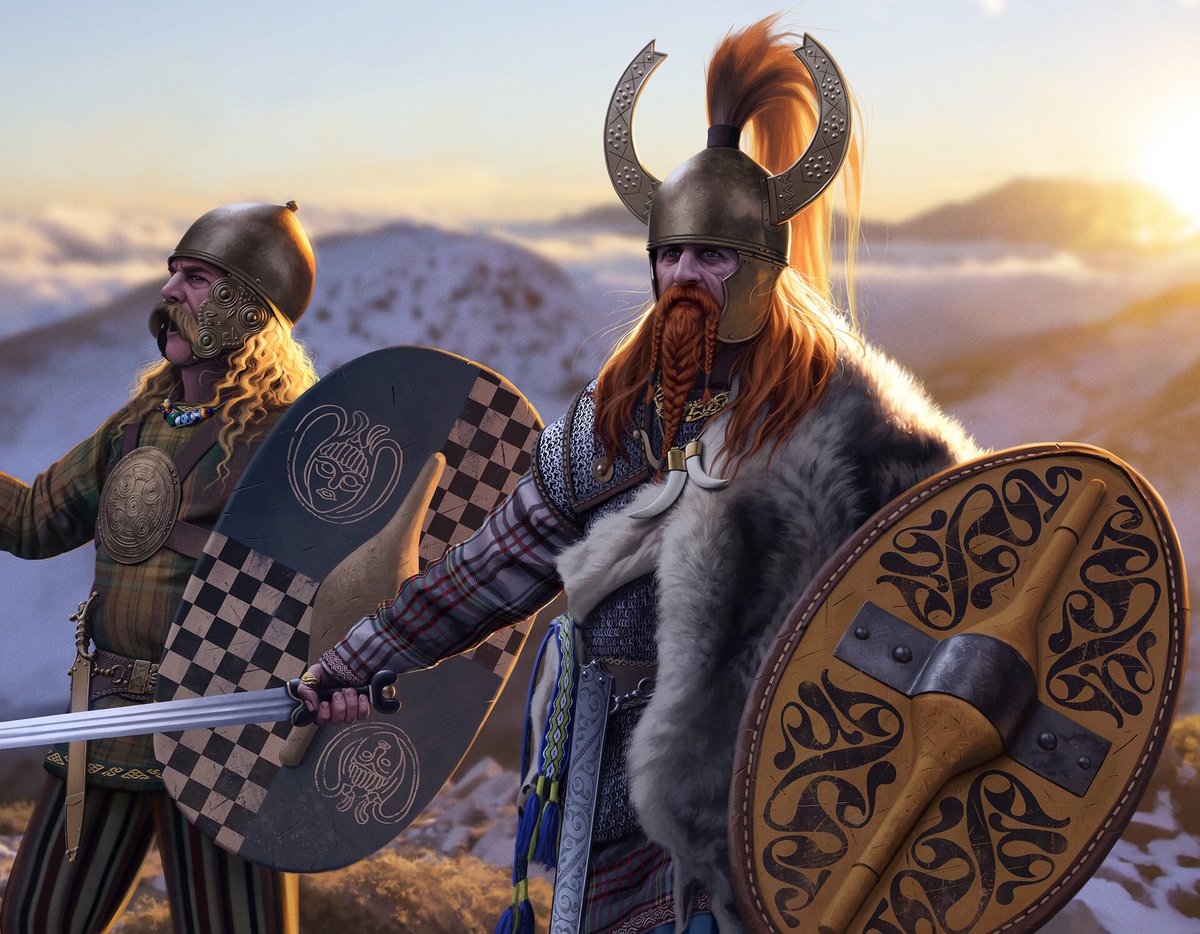
Did you know Afghanistan, Pakistan, and India were once home to Greek Kingdoms?
A thread on the Greco-Bactrians and the “Land of One Thousand Golden Cities.”
A thread on the Greco-Bactrians and the “Land of One Thousand Golden Cities.”

The steppes, mountains, & river valleys of Central Asia sat at the crossroads of the ancient world. To the East; the desolate Tarim Basin & China. The rivers of India to the South. The Iranian Plateau & Mediterranean lay Westwards, & the endless forests of Siberia sat the North. 

The region itself was divided by Iranian peoples who lived as pastoral steppe nomads on the grass seas, most notably the Scythians, & agriculturalists who farmed & lived in the cities of the river valleys, like the Sogdians. 

By the Classical Era, many empires began making forays into the region. The Persian Empire, the largest empire ever at the time, marched its armies toward its ancient homeland, fighting wars against the cities of Bactria & fearsome, nomadic Saka. 

Cyrus the Great established garrison towns in the region, the most important, Cyropolis, to guard this far flung borderland. Many rebellious Ionian Greeks were settled here; an attempt to weaken seditious activity on his turbulent flanks. 

When Alexander the Great conquered the Persian Empire, Bactria found itself connected politically & geographically to the Hellenic World; stretching from the Indus to S. France. This conquest & the settling of Alexander’s veterans strengthened the Hellenic character of the region 

As the Seleucid Empire retreated under Parthian pressure, the Greco-Bactrians asserted their independence under their first king, Diodotus I. Diodotus repelled a Parthian invasion & Strabo, the famous Greek geographer, stated the kingdom was “extremely prosperous.” 

However, the Parthian conquest of Iran cut off Bactria’s overland connections to the rest of the Hellenic world. This development encouraged the Greco-Bactrians to expand their horizons. 

From their urban core in the Fergana Valley & Bactria, watered by the Oxus & Jaxartes Rivers & protected by the snow-capped Hindu Kush, Pamir, & Tien Shan Mountains, the Greco-Bactrian armies marched toward the Indus where the collapsed of the Mauryan Empire left a power vacuum. 

The Greco-Bactrian king Demetrius invaded the subcontinent in 180 BC. His army of steppe riders & Greek phalanxes campaigned far into Northern India, conquering much of the Indus river valley. Demetrius’s decision to invade may have been motives by his ties with the Mauryans. 

Demetrius’s daughter, Berenice, had married the last Mauryan Emperor, Brihadratha. Beyond dynastic ties, the Greco-Bactrians also wished to reunite with the many Greeks who had settled in Punjab. The Greeks had also began to absorb local practices; most notably religion. 

Ashoka, the greatest Mauryan king, famously converted to Buddhism & dispatched missionaries to proselytize the faith, some reaching the Greeks in Punjab & Bactria. Many Greeks converted, foremost being Menander I, an Indo-Greek king & patron of the syncretic Greco-Buddhism. 

Greco-Buddhism fused Greek philosophy & the religious concepts of Buddhism; its art married Greek aesthetics & Buddhist motifs. The first statues of Buddha emerge from the Greek kingdoms & are Greek in composition. Modern depictions of Buddhist subjects descend from this style. 

The Greeks of this region also preserved & produced Buddhist texts, most notably the “Questions of Menander,” a Platonic discourse between the famous convert & patron of Buddhism & the Buddhist monk Nagasena. 

The region is home to many stunning Buddhist monuments & artwork, a legacy of these Greeks. Control of the Indus also allowed for more reliable communication & trade with the wider Hellenic world through the sea lanes of the Indian Ocean. 







With the construction of ports on the Egyptian Red Sea coast, trade between the Mediterranean & subcontinent blossomed. Ships returned from the Indus laden with jewels & perfume & tales of outlandish wealth. By the 1st c. BC, 120 ships a year sailed for the Indus from Egypt. 

The Greeks also forged a relationship with “Seres;” China. Bactrian military expeditions marched into Xinjiang by 220 BC, leading to diplomatic, economic, & cultural ties. Greek-style statuettes have been found in the region & Han art adopted Mediterranean styles. 

The Greco-Bactrians began minting copper-nickel coins, technology only known to the Chinese at the time. Chinese envoys traveling to Bactria in the 2nd C. BC gave rise to the Silk Road that connected the Mediterranean overland to China. 

One envoy, Zhang Qian, found bamboo & Chinese cloth in Bactria, purchased from India, & remarked Bactria was “full of rare things, the people living in fixed abodes & in occupations somewhat identical to those of the Chinese, & placing great value on the rich produce of China.” 

In the midst of this rich cultural crossroads, Hellenic art & culture thrived. Ai-Khanoum, Afghanistan had a theater, gymnasium, Greek style houses with courtyards. Greek style statues, Corinthian columns, theater masks, stunning coins, & even Delphic inscriptions were excavated. 







Around 140 BC the turbulent political landscape of the steppe spawned a massive migration of the Saka & Yuezhi into Bactria. The Greco-Bactrians, weakened by internal conflict, were unable to stop hundreds of thousands of horsemen. Many cities were razed, never to be resettled. 

The last Greco-Bactrians retreated to their lands near Kabul & the Indus. The Indo-Greeks would survive & thrive here for over a century. After the rule of their greatest king, Menander, they fractured into statelets. The last king, Strato III, fell to the Indo-Scythians in 10 AD 

The loss of independence didn’t spell the end of the Greeks. The cities of Bactria maintained their Greek character under the Yuezhi, who adopted the Greek alphabet. The Indo-Greek influence is traceable in the coinage, calendars, & Greek writings in the Gupta Empire (4th c. AD) 

Perhaps the most long-lasting impact of the Greeks here was their influence on Mahayana Buddhism, altered by Greek philosophical traditions & exported across the Silk Road to East Asia, dramatically impacting the region. Hundreds of millions practice Mahayana Buddhism today.
https://twitter.com/cartographer_s/status/1579901371364839424
The Greeks of this far-flung outpost helped knit the Eurasian world together from their mountain home. The Silk Road the Greco-Bactrians helped create brought the Mediterranean & East Asian worlds into increasingly regular, mutually-enriching contact. 

Although reduced now to silver coins pulled from mud & abandoned Buddhist monasteries on Afghan cliffs, the dynamism of the Greco-Bactrians can still be felt in our more connected world whose undercurrents were impacted by these syncretic kingdoms. 

• • •
Missing some Tweet in this thread? You can try to
force a refresh






















